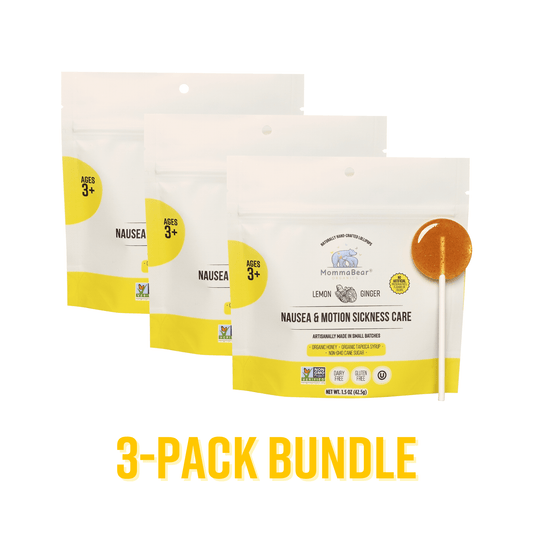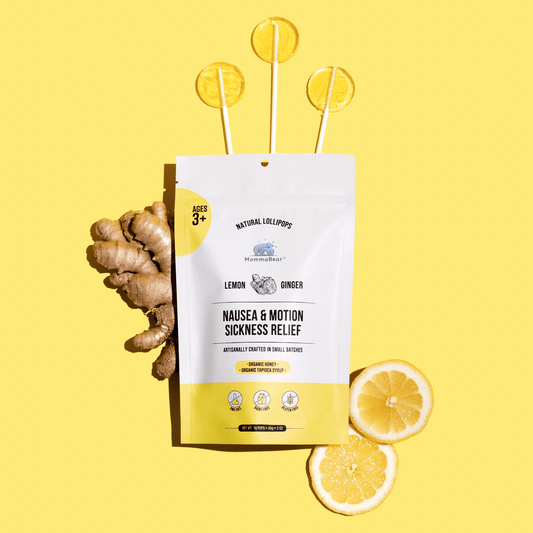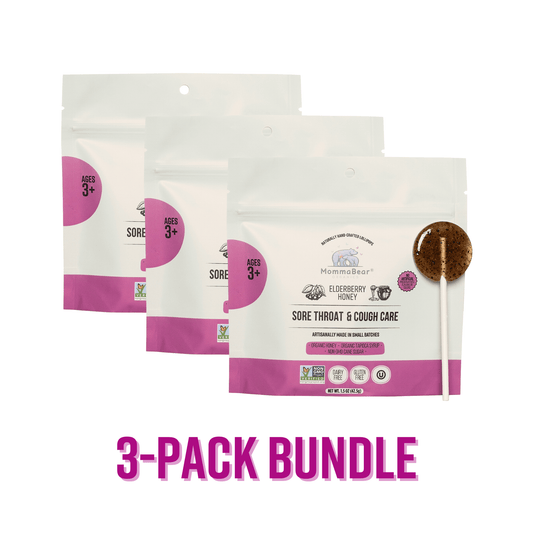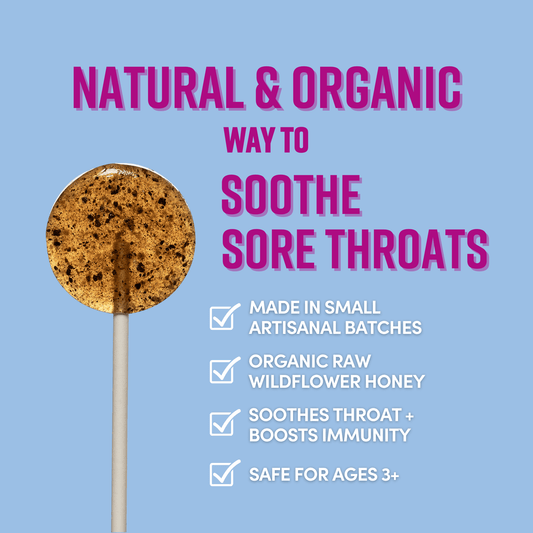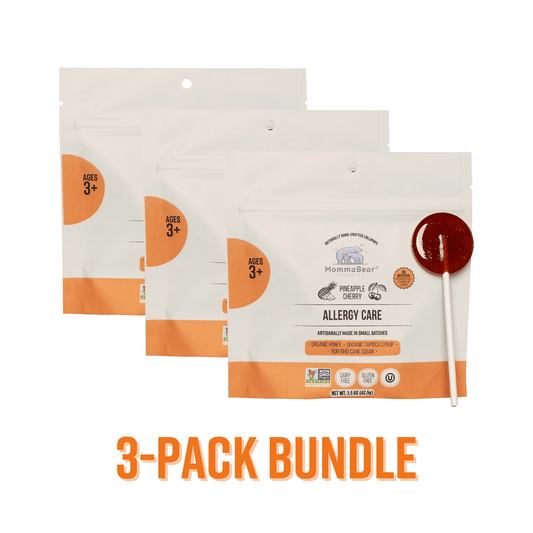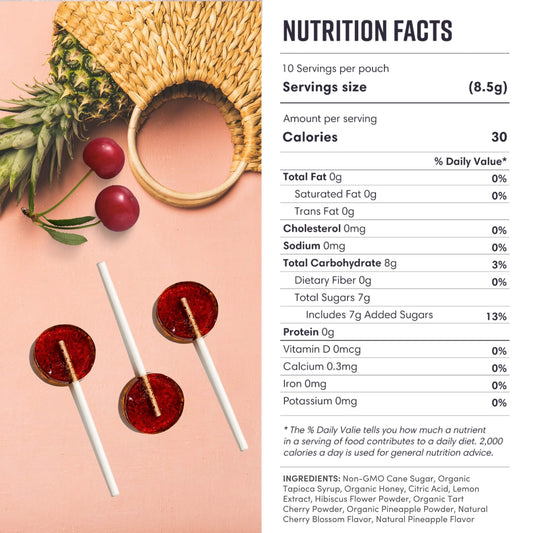Which candy is healthier for your kids - organic or conventional? Here's a quick breakdown to help you decide:
- Organic candy: Made with natural sweeteners (like organic cane sugar or honey), no artificial additives, and minimal pesticide exposure. It avoids GMOs and synthetic dyes.
- Conventional candy: Often contains high-fructose corn syrup, synthetic dyes (e.g., Red 40, Yellow 5), and preservatives like BHT, which may pose health risks, especially for children with sensitivities.
Both types of candy have high sugar content, so moderation is key. Organic options may be better for avoiding artificial ingredients and allergens, but they still contain similar sugar levels.
Quick Comparison
| Factor | Organic Candy | Conventional Candy |
|---|---|---|
| Sweeteners | Organic cane sugar, honey, maple syrup | High-fructose corn syrup, artificial sweeteners |
| Additives | No artificial colors or preservatives | Contains synthetic dyes and preservatives |
| Pesticide Exposure | Minimal to none | Possible pesticide residues |
| Allergy Risk | Lower risk | Higher risk due to synthetic additives |
| Sugar Content | High (similar to conventional) | High |
Bottom Line: Organic candy offers simpler, more natural ingredients but still contains sugar. Whichever you choose, focus on portion control and label reading to make smarter choices for your family.
'Healthy' candies grow in popularity, but are they really better?
What's Inside: Organic vs. Conventional Candy
Understanding candy ingredients can help you make choices that suit your family's health priorities. Here's a closer look at the typical ingredients in organic and conventional candy.
Common Organic Candy Ingredients
Organic candy relies on ingredients grown without synthetic pesticides or fertilizers. These sweets often use natural sweeteners like organic cane sugar, raw wildflower honey, or maple syrup. They also avoid artificial additives and preservatives. Since around 95% of sugar beets in the U.S. are genetically modified, organic candy production focuses on steering clear of GMOs.
| Organic Sweeteners | Features |
|---|---|
| Organic Cane Sugar | Less processed than standard white sugar |
| Raw Wildflower Honey | Naturally contains antibacterial properties |
| Pure Maple Syrup | Offers minerals and antioxidants |
| Fruit Juices | Used for natural flavor and color |
On the other hand, conventional candy relies heavily on synthetic additives for flavor, appearance, and shelf life.
Common Conventional Candy Ingredients
Conventional candy often contains high-fructose corn syrup (HFCS), which has been linked to conditions like fatty liver disease and insulin resistance. It also includes artificial colors, such as Blue 1, Yellow 5, Yellow 6, and Red 40, which studies associate with behavioral changes in children with ADHD. Another common ingredient, BHT (Butylated hydroxytoluene), is sometimes flagged for its potential role as an endocrine disruptor.
| Conventional Additives | Purpose | Possible Concerns |
|---|---|---|
| High-Fructose Corn Syrup | Sweetener | Linked to fatty liver disease |
| Artificial Colors | Enhances appearance | May contribute to hyperactivity in kids |
| BHT | Preservative | Potential endocrine disruption |
| Artificial Flavors | Boosts taste | Could include synthetic chemicals |
Both types of candy share sugar as a primary ingredient, but their processing methods and added substances make a big difference in their overall health effects. The American Heart Association suggests limiting daily sugar intake to 25 grams for women and 37.5 grams for men.
Effects on Children's Health
Sugar Levels Compared
Both organic and conventional candies contain a lot of sugar. On average, Americans consume around 60 pounds of sugar annually - far above the recommended daily limits of 25 grams for women and 37.5 grams for men. This excessive sugar intake increases the risk of health issues like obesity and diabetes.
Food Additives and Reactions
Conventional candies often include artificial additives, which can cause adverse reactions in some children. A 2016 study revealed that 43.2% of products marketed to children contained artificial food colors, with candies reaching a staggering 96.3%. Common additives like Brilliant Blue (E133) and Tartrazine (E102) were present in 54.1% and 42.3% of the products analyzed, respectively. Research indicates that dietary changes can benefit 33% of children with ADHD, with around 8% specifically sensitive to food colorants. On the other hand, organic candy typically has simpler ingredient lists, making it easier to assess for allergens and additives.
Simple Ingredients Matter
The straightforward ingredient lists in organic candy give parents a clear understanding of what their children are eating. For example, the ORGANIKO LIFE+ study found that children aged 11–12 who consumed organic foods for 40 days had reduced pesticide exposure and lower markers of oxidative stress and inflammation. Nutritionist Tami Best, MS, RDN, CDN, IFNCP, emphasizes:
"Organic candy has the same sugar content as conventional varieties; we must reduce all excessive sugars"
Here’s how organic and conventional candies compare:
| Factor | Organic Candy | Conventional Candy |
|---|---|---|
| Ingredient Transparency | Clear, simple ingredient lists | Complex, synthetic ingredients |
| Pesticide Exposure | Minimal to none | May contain pesticide residues |
| Additive Content | Free of artificial additives | Contains synthetic additives |
| Allergy Considerations | Lower risk of triggering reactions | Higher risk of sensitivities |
For children with sensitivities or allergies, organic options provide clearer ingredient information. With food additive reactions affecting 1–2% of the general population, knowing exactly what’s in a product can be a game-changer for families managing these challenges.
sbb-itb-e1a023f
How to Choose Better Candy Options
Understanding Candy Labels
Reading candy labels can help parents make informed decisions. Look for the USDA Organic Seal, which guarantees the product meets USDA organic standards. Here’s a breakdown of common organic certifications:
| Certification Level | Meaning | Requirements |
|---|---|---|
| 100% Organic | Highest organic standard | All ingredients are organic (excluding salt and water) |
| USDA Organic | Standard organic certification | At least 95% organic ingredients |
| Made with Organic | Partial organic content | At least 70% organic ingredients |
Pay attention to labels that list artificial additives like Blue 1, Yellow 5, Yellow 6, and Red 40. To ensure a product is free from genetically modified ingredients, look for the Non-GMO Project Verified symbol.
Clear labeling helps set the foundation for managing portion sizes effectively.
Setting Serving Sizes
Candy plays a role in many children’s diets, with 31% consuming it daily. This accounts for about 14% of their added sugar intake. Smaller portions can help control calorie consumption and reduce overindulgence.
Here are some ideas for managing candy portions:
- One piece of candy daily
- Two pieces every other day
- Three pieces every third day
Once portion sizes are in check, focus on choosing candies with better ingredients.
Health-Supporting Candy Choices
Some candies, like MommaBear Organics' lollipops, can satisfy sweet cravings while offering healthier alternatives. These lollipops are made with raw wildflower honey and are free from high fructose corn syrup, artificial colors, and common allergens.
When selecting candy, opt for natural sweeteners such as cane sugar, honey, or maple syrup instead of high fructose corn syrup or artificial sweeteners. Here's a quick guide:
| Ingredient Type | Better Choices | Ingredients to Avoid |
|---|---|---|
| Sweeteners | Organic cane sugar, honey, maple syrup | High fructose corn syrup, artificial sweeteners |
| Colors | Natural colorants (e.g., beetroot, spirulina, turmeric) | Artificial dyes (Blue 1, Yellow 5, Yellow 6, Red 40) |
| Preservatives | Natural alternatives | BHT, BHA, TBHQ |
The American Heart Association advises limiting daily added sugar intake to 25 grams for women and 37.5 grams for men. Choosing candies with natural ingredients can help meet these guidelines while still enjoying a treat.
Beyond Ingredients: Production and Packaging
Organic Farming Methods
The journey of organic candy starts with farming practices that prioritize soil health and ecological balance. The Rodale Institute describes organic agriculture as:
"Organic agriculture is a production system that regenerates the health of soils, ecosystems, and people".
According to USDA standards, these practices aim to promote the health of entire systems. Here’s how organic farming stands apart from conventional methods:
| Aspect | Organic Farming | Conventional Farming |
|---|---|---|
| Pest Control | Natural predators, crop rotation | Synthetic pesticides |
| Soil Health | Composting, natural fertilizers | Chemical fertilizers |
| Environmental Impact | Lower carbon footprint | Higher greenhouse emissions |
This focus on sustainability influences not just how candy ingredients are grown but also how the final product is packaged.
Eco-Friendly Production
The demand for sustainable packaging is growing fast, with the market expected to hit USD 533 billion by 2033. Currently, about 70% of chocolate packaging is plastic, and only 9% of it gets recycled globally. Consumers increasingly prefer options that are recycled, eco-friendly, or entirely plastic-free.
Organic candy producers are stepping up with creative solutions, such as plant-based and compostable packaging materials. Packaging expert Carolina Álvarez puts it best:
"Packaging isn't merely a container; it's a promise of unaltered quality."
These efforts underline the industry’s push toward reducing waste and embracing materials that align with environmental values.
Plant-Based Candy Options
For health-conscious families and environmentally aware consumers, plant-based candy offers a thoughtful alternative. These products often include:
- Gelatin-free ingredients
- No preservatives
- No corn syrup
- Non-GMO components
- Certified organic ingredients
MommaBear Organics is a standout example, crafting small-batch lollipops with organic, non-GMO ingredients and eco-friendly packaging. By using raw wildflower honey as a natural sweetener, they show how high-quality ingredients can support both taste and sustainability.
Next Steps for Parents
With better understanding of ingredients and packaging, here are practical tips for parents to consider. The American Heart Association recommends adults limit sugar intake to 25–36 grams per day, with even stricter guidelines for children.
Check Labels Carefully
Look at candy labels to steer clear of high fructose corn syrup, artificial colors, and synthetic preservatives.
Choose Better Alternatives
Swap out regular candy for organic options with fewer additives and simpler ingredients. As Lauren Harris-Pincus, M.S., R.D.N., points out:
"Even 'healthier' candy is still candy and not likely to be a significant source of vitamins, minerals, antioxidants and phytonutrients... But candy in small amounts fits into an overall nutrient-rich diet - a piece of dark chocolate or fruit snacks made with real fruit can satisfy a sweet tooth while providing some nutrients."
Find Balance
Use these strategies to manage your child’s candy consumption wisely:
| Strategy | How to Apply | Why It Helps |
|---|---|---|
| Trade-Up System | Swap regular candy for organic options | Cuts down on artificial ingredients |
| Special Occasion Rule | Save candy for celebrations or rewards | Encourages healthier habits |
| Alternative Treats | Offer stickers or small toys instead | Lowers overall sugar consumption |
These approaches build on earlier advice, focusing on mindful swaps and portion control to reduce exposure to harmful ingredients.
For parents seeking healthier choices, MommaBear Organics offers handcrafted organic lollipops made with raw wildflower honey and no artificial ingredients. These treats provide a thoughtful alternative that fits into your family’s wellness goals.
FAQs
How can I tell if candy is organic, and what labels should I check for?
To identify organic candy, look for the USDA Organic seal on the packaging. This seal ensures the candy is made with at least 95% organic ingredients and meets strict production and handling standards. Additionally, check for the name of the certifying agent, which is usually listed on the package. These details guarantee you're choosing a product that aligns with organic guidelines and avoids synthetic additives commonly found in conventional candy.
What are the health benefits of choosing organic candy for my child?
Opting for organic candy can provide several potential health benefits for your child. Organic candies are typically made with natural ingredients like organic cane sugar, real fruit extracts, and plant-based colorings, avoiding artificial additives, preservatives, and synthetic sweeteners often found in conventional candy.
By choosing organic, you can also help reduce your child's exposure to pesticides and other harmful chemicals, as organic farming avoids synthetic pesticides and fertilizers. Additionally, organic production supports environmentally sustainable practices, promoting soil health and biodiversity. This makes organic candy a healthier choice for your child and a more eco-friendly option overall.
How can I help my child enjoy candy without consuming too much sugar?
To balance your child’s enjoyment of candy with healthy habits, focus on moderation and mindful choices. Offer candy as an occasional treat rather than a daily snack, and set clear limits on how much they can have at one time. Creating routines around when and how candy is enjoyed - like after meals or during special occasions - can help prevent overindulgence.
Consider healthier alternatives like fresh fruit or natural snacks to satisfy their sweet tooth. When choosing candy, look for options with fewer artificial ingredients, colors, and sweeteners. Teaching kids to enjoy treats mindfully can also encourage healthier attitudes toward sweets in the long run.


